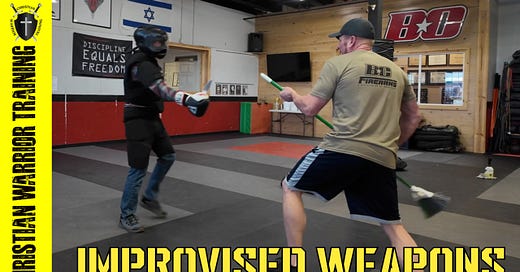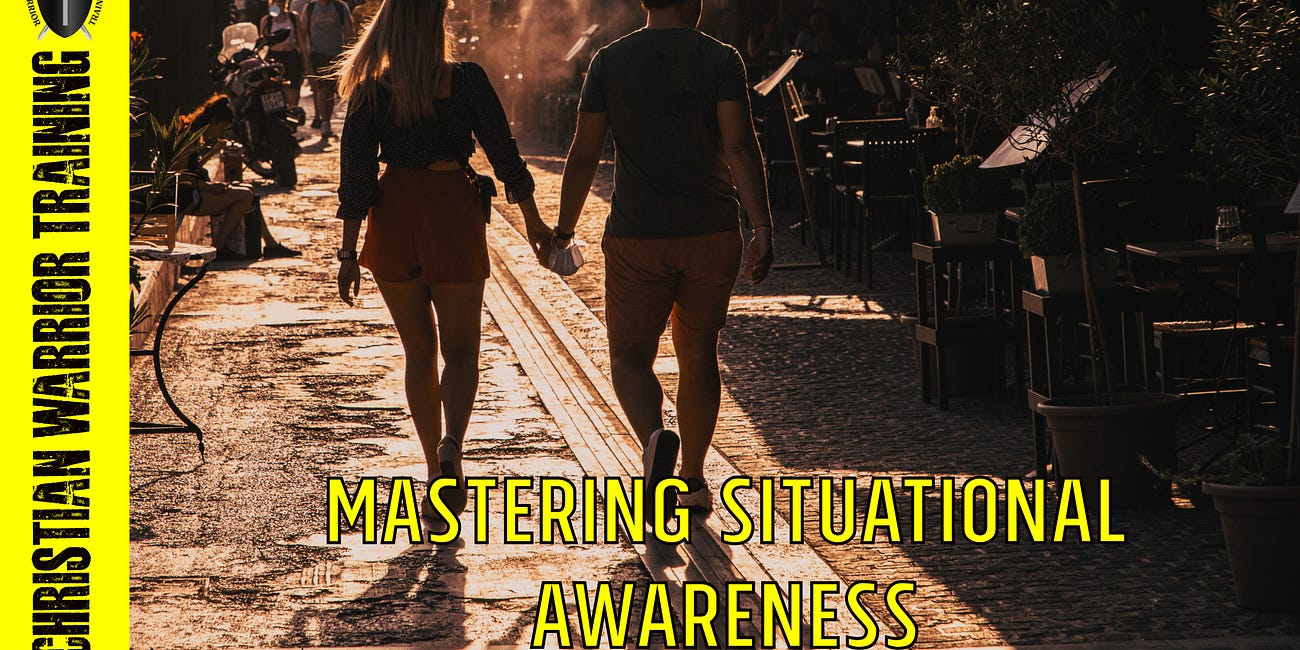Understanding the Need for Alternative Weapons
In states like California, New York, and Illinois, where gun laws are restrictive, church security teams must explore alternative methods of self-defense. This article is designed to help you understand the various everyday items that can be used as improvised weapons, providing options when firearms are not permitted.
To support this, I have created a video interview with Beau Duroucher from Boise City Krav Maga. In this video, we discuss various impact weapons and less-lethal options available to church security teams. You can watch the video below for a detailed demonstration of these improvised weapons and how to use them effectively.
Everyday Items as Weapons
When traditional firearms are not an option, it is essential to consider the potential of everyday items as weapons. These items can be both practical and effective for self-defense, ensuring you are prepared to protect yourself and others in a crisis.
Flashlights: A sturdy flashlight, such as a four-cell D flashlight, serves a dual purpose. It is not only useful for illumination during power outages but can also be an effective impact weapon. The solid construction and weight make it a formidable tool to keep an attacker at bay. Flashlights designed for tactical use often come with beveled edges, enhancing their effectiveness as a striking tool. Carrying a flashlight is also a practical measure since it can help navigate dark areas, making it an inconspicuous yet powerful addition to your self-defense arsenal.
Tactical Pens: Tactical pens are designed for durability and self-defense. They can be carried inconspicuously and used effectively in close-quarters combat. These pens can deliver sharp, precise strikes, enabling you to create distance between yourself and an attacker. Made from sturdy materials like aircraft-grade aluminum, tactical pens are designed to withstand significant force. Their design allows them to function as a regular writing instrument, making them less likely to raise suspicion. The pointed end can be used to strike pressure points or sensitive areas, providing a means to defend oneself discreetly.
Pepper Spray: Pepper spray is a widely available and legal self-defense tool in many restrictive states. It can incapacitate an attacker temporarily, providing a crucial window to escape or seek help. The active ingredient, capsaicin, causes intense irritation to the eyes, skin, and respiratory system, effectively disabling an assailant. When selecting pepper spray, consider factors such as range, capacity, and safety mechanisms. Regular practice with inert training sprays can help ensure accurate deployment in a high-stress situation. Additionally, understanding the wind direction and potential environmental factors is crucial to avoid self-contamination.
Fire Extinguishers: Fire extinguishers are commonly found in buildings and can serve as both a distraction and an impact weapon. Spraying the contents can disorient an attacker, while the extinguisher itself can be used to strike. The combination of a pressurized spray and a heavy metal canister makes fire extinguishers versatile defensive tools. Aim the spray at the attacker’s face to cause disorientation, then use the canister to deliver powerful strikes if necessary. Understanding the types of fire extinguishers and their contents can also help in selecting the most effective model for self-defense.
Training is Essential
Having improvised weapons is only part of the solution; proper training is crucial. Watching instructional videos or reading about techniques is not enough. Practical, hands-on training builds the confidence and competence necessary to effectively use these tools in a crisis. Seek out local self-defense classes that focus on using everyday items for protection. These classes often incorporate scenario-based training, allowing you to practice in realistic environments and under simulated stress conditions. Regular training sessions reinforce muscle memory and ensure that you can react instinctively when faced with a threat.
Legal and Liability Considerations
Understanding the legal implications of using improvised weapons is vital. In many places, the legality of using force depends on the situation and the perceived threat. It's important to be the innocent party and to have exhausted other options before resorting to force. Always ensure that your actions are justified and that you are prepared to explain your decisions in a legal context. Consulting with a legal expert familiar with self-defense laws in your area can provide clarity on what is permissible. Additionally, documenting your training and the circumstances leading to the use of force can be crucial in demonstrating that your actions were reasonable and necessary.
Practical Training Recommendations
Situational Awareness: Training in situational awareness helps you identify potential threats before they escalate. Being aware of your surroundings and recognizing pre-attack indicators can prevent conflicts from arising. This involves understanding body language, environmental cues, and potential escape routes. Regularly practicing situational awareness exercises, such as scanning your environment and identifying potential hazards, can enhance your ability to respond proactively. Incorporating situational awareness drills into your daily routine ensures that you remain vigilant and prepared at all times.
Krav Maga: Krav Maga, the Israeli military self-defense system, is highly effective for quick learning and practical application. It emphasizes neutralizing threats and escaping dangerous situations, making it ideal for church security teams. Krav Maga techniques are designed to be simple and instinctive, allowing individuals to defend themselves effectively regardless of their physical condition. Training in Krav Maga includes strikes, grappling, and disarming techniques, providing a comprehensive self-defense system. The emphasis on real-world scenarios ensures that practitioners are prepared for a variety of threats, from unarmed attackers to armed assailants. If you are in the Boise, Idaho area, I strongly encourage you to hit up Boise City Krav Maga.
Regular Practice: Regular training sessions for your team are essential. This ensures everyone is familiar with the tools and techniques and can respond effectively during an incident. Encourage team members to specialize in different areas, such as medical response or de-escalation, to cover all aspects of security. Training should include both individual and team drills, reinforcing the importance of coordination and communication. Regular evaluations and scenario-based exercises help identify areas for improvement and ensure that the team remains proficient in their skills. Investing time in regular practice not only enhances individual capabilities but also strengthens the overall effectiveness of the security team.
Conclusion
For those in gun-restrictive states, having a variety of non-lethal options is crucial for effective church security. Everyday items like flashlights, tactical pens, and fire extinguishers can be transformed into powerful tools for protection. Coupled with proper training and an understanding of legal considerations, these alternatives provide a robust defense strategy. Always stay prepared, stay trained, and stay vigilant. Leave a comment below if you have questions or need more information on improvised weapons and training options.







Canes weren't mentioned, but a hickory cane may also be a good option.
I second the comment below from Dan Mayne, Sr. what about the Byrna Launcher? See byrna.com.